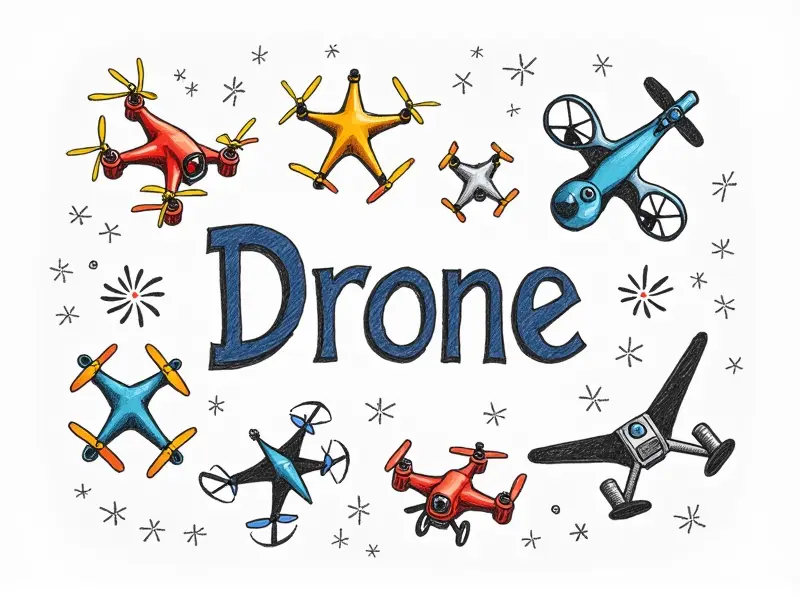DIY drone range extender

DIY Guide to Extending Drone Range
If you're an avid drone enthusiast looking to push the boundaries of your aerial adventures, extending your drone's range can be a game-changer. Whether you fly for fun or work, having a longer-range drone means more freedom and better performance. In this article, we'll explore how to create a DIY drone range extender that boosts signal strength and maximizes distance.
Boost Your Drone's Signal with DIY
The first step in extending your drone’s range is understanding the basics of radio frequency (RF) signals. RF signals are used for communication between your controller and the drone, and they can be weakened by obstacles like buildings or trees. By enhancing these signals, you can significantly increase your drone's operational distance.
Materials Needed
- Breadboard or PCB board
- Antenna components (coaxial cable, SMA connectors)
- Soldering iron and solder wire
- Crimp tool for SMA connectors
- Heat shrink tubing
- Battery pack or power supply
Craft an Effective Drone Range Expander
To craft a range expander, start by selecting the right antenna type. Directional antennas are ideal for long-range applications as they focus signals in one direction, reducing interference from other sources.
Step-by-Step Guide
- Design: Sketch out your design on paper or a digital tool like Fritzing. Plan where each component will go and how it connects to the drone’s existing hardware.
- Assembly: Begin by soldering components onto the breadboard or PCB board. Ensure all connections are secure before moving on to the next step.
- Antenna Installation: Attach the antenna to your controller and drone using SMA connectors. Make sure everything is properly insulated with heat shrink tubing.
Extend Your Drone's Reach with Ease
Once you’ve built your range extender, it’s time to test its effectiveness. Fly your drone in an open area and gradually increase the distance until signal loss occurs. Compare this range with your original setup to see how much improvement there is.
Troubleshooting Tips
- Check for loose connections or damaged cables.
- Ensure antennas are properly aligned and pointing in the correct direction.
- Test different antenna types to find the best fit for your specific needs.
Maximize Distance with DIY Kit
A well-designed DIY kit can provide significant improvements in range. Consider using high-quality components like gold-plated SMA connectors and durable coaxial cables to ensure longevity and reliability.
Budget-Friendly Options
- DIY Antenna Kit: Purchase a basic antenna kit online or at your local electronics store.
- Reconditioned Components: Look for used but functional components to save money while still achieving good results.
Create a Long-Range Drone Antenna
The key to creating an effective long-range antenna is understanding the principles of RF transmission. By focusing on signal strength and minimizing interference, you can create an antenna that performs well in various conditions.
Antenna Types
- Parabolic Antennas: These are highly directional and provide excellent range but require precise alignment.
- Yagi-Uda Antennas: A popular choice for long-range communication due to their high gain and narrow beamwidth.
Increase FPV Drone Range with DIY Tricks
First-person view (FPV) drones require a strong, stable signal for optimal performance. By implementing the right range extender techniques, you can enhance your FPV experience significantly.
Tips and Techniques
- Use High-Gain Antennas: Opt for antennas with higher gain to boost signal strength over long distances.
- Reduce Interference: Keep your drone away from other electronic devices that might cause interference.
Enhance Drone Performance with a Range Extender
A properly designed range extender can enhance not only the distance but also the overall performance of your drone. Improved signal strength means better control and smoother operation, leading to more enjoyable flights.
Benefits of Enhanced Range
- Increased Operational Distance: Fly farther without losing connection.
- Improved Control: Better responsiveness and maneuverability at longer ranges.
- Enhanced Safety: More time to react if the drone encounters unexpected obstacles.
Boost Drone Signal with Homemade Gear
Making your own range extender gear can be both cost-effective and rewarding. By customizing components to fit your specific needs, you can achieve a setup that outperforms off-the-shelf solutions.
Hacks for DIY Enthusiasts
- Modular Design: Create a modular system where different antennas and components can be easily swapped based on the situation.
- DIY Antenna Designs: Experiment with homemade antenna designs to find unique solutions that work best for your drone.
Craft a Simple Range Extender for Drones
A simple range extender can be just as effective as complex setups, especially if you're looking for quick improvements without diving into advanced electronics. Follow these steps to create a basic but functional range extender:
Basic Components
- Breadboard: For easy assembly and testing.
- SMA Connectors: To connect your antenna to the drone’s receiver.
- Cable: High-quality coaxial cable for reliable signal transmission.
Extend Your Drone's Reach Easily
The final step is testing and refining your range extender. Once you’ve built it, take the time to test its performance under various conditions. Adjust components as needed until you achieve optimal results.
Maintaining Your Range Extender
- Regular Maintenance: Check connections periodically and replace damaged parts.
- Environmental Considerations: Be mindful of weather conditions that might affect signal strength.
In conclusion, extending your drone’s range through DIY methods can greatly enhance your flying experience. By understanding the basics of RF signals, selecting appropriate components, and following a step-by-step guide, you can create an effective range extender that boosts performance and opens up new possibilities for your aerial adventures.

